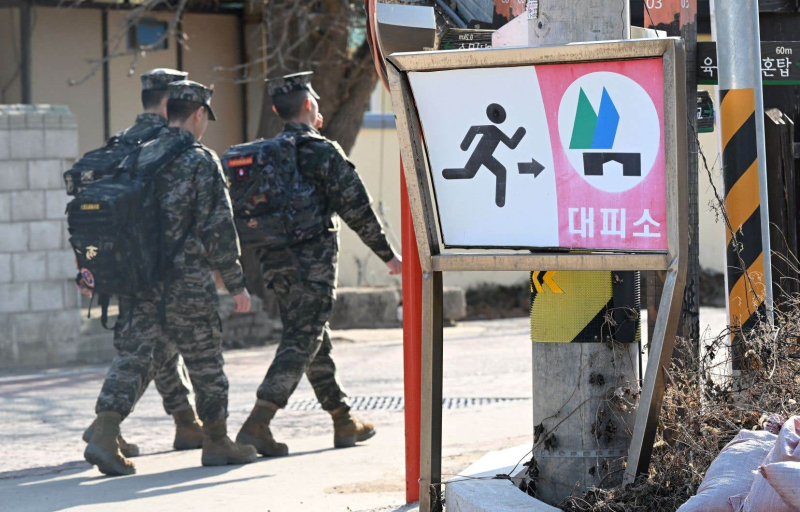
Jung Yeon-je Agence France-Presse It is the biggest escalation on the peninsula since the North Korean military bombed Yeonpyeong in 2010 in response to a South Korean live ammunition exercise near the border.
France Media Agency in Seoul
1:28 p.m.
- Asia
North Korea fired more than 60 shells near the South Korean island of Yeonpyeong on Saturday, the South Korean army announced, the day after a first salvo from Pyongyang which triggered Seoul's response with an exercise live ammunition in the region.
“North Korean forces fired more than 60 shells” near Yeonpyeong Island “between approximately 4 p.m. and 5 p.m.” (2 a.m. and 3 a.m. in Quebec), said the staff of the South Korean army, warning Pyongyang against continuing these shots.
On Friday, North Korea fired more than 200 shells into the Yellow Sea near the two South Korean islands of Yeonpyeong and Baengnyeong, located just south of the de facto maritime border between the two countries.
Yeonpyeong, with a population of about 2,000, is located about 115 km west of Seoul and about ten kilometers south of the North Korean coast.
Also very close to North Korea, Baengnyeong, population 4,900, is about 210 km west of the South Korean capital.
Friday's shooting caused no casualties or damage, according to Seoul. Residents were ordered to shelters and ferry services connecting the islands to the rest of South Korea were suspended.
New escalation
This is the biggest escalation on the peninsula since the North Korean military bombed Yeonpyeong in 2010 in response to a South Korean live ammunition exercise near the border.
This first North Korean attack against civilians since the Korean War (1950-1953) left four dead, two soldiers and two civilians. The artillery duel had lasted about an hour, with each side firing some 200 shells.
The new escalation comes after a volley of bellicose statements from North Korean leader Kim Jong Un, who has notably threatened in recent days to “annihilate” South Korea and the United States.
Both Saturday and Friday, North Korean shells landed in one of the buffer zones created in 2018 as part of an agreement between the two neighbors aimed at preventing border military incidents. All live ammunition shooting was prohibited in these areas.
But Seoul partially suspended the deal last November to protest Pyongyang's launch of a spy satellite, and the North rejected the entire deal soon after.
“Threat to peace”
South Korea's military said Saturday that “repeated” North Korean artillery fire in the area “poses a threat to peace on the Korean Peninsula.”
She issued “a severe warning” and called on North Korea to stop immediately, assuring that “in response, our military will take appropriate measures to safeguard the country.”
“North Korea, after announcing the complete cancellation of the September 19 military agreement (2018, Editor's note) continues to threaten our citizens with continuous artillery fire inside the zone prohibiting hostile acts,” the army insisted.
North Korea said Friday that its shelling near the two islands was “a natural response and countermeasure” to military exercises carried out by Seoul, according to the official KCNA agency.
South Korean Defense Minister Shin Won-sik, for his part, denounced “a provocative act that threatens peace on the Korean peninsula and aggravates tensions”.
The South Korean military will take “immediate, strong and definitive retaliatory measures — we must support peace with overwhelming force,” he added.
North Korea in turn ordered South Korea not to “commit any provocation under the pretext of a so-called countermeasure,” according to the KCNA agency. She threatened “harsh countermeasures at an unprecedented level.”
China, an ally of North Korea, called on “all parties for calm and restraint.”
Washington, for its part, called on North Korea “to refrain from any further destabilizing and provocative actions, and to resume diplomacy.”
At the end of December, Kim Jong Un ordered the acceleration of military preparations for a “war” that could “be launched at any time.”
Last year, North Korea enshrined its status as a nuclear power in its constitution and fired several intercontinental ballistic missiles, in violation of UN resolutions.
The two Koreas are still technically at war since the end of the conflict on the peninsula in 1953, which ended with an armistice and not a peace treaty.

